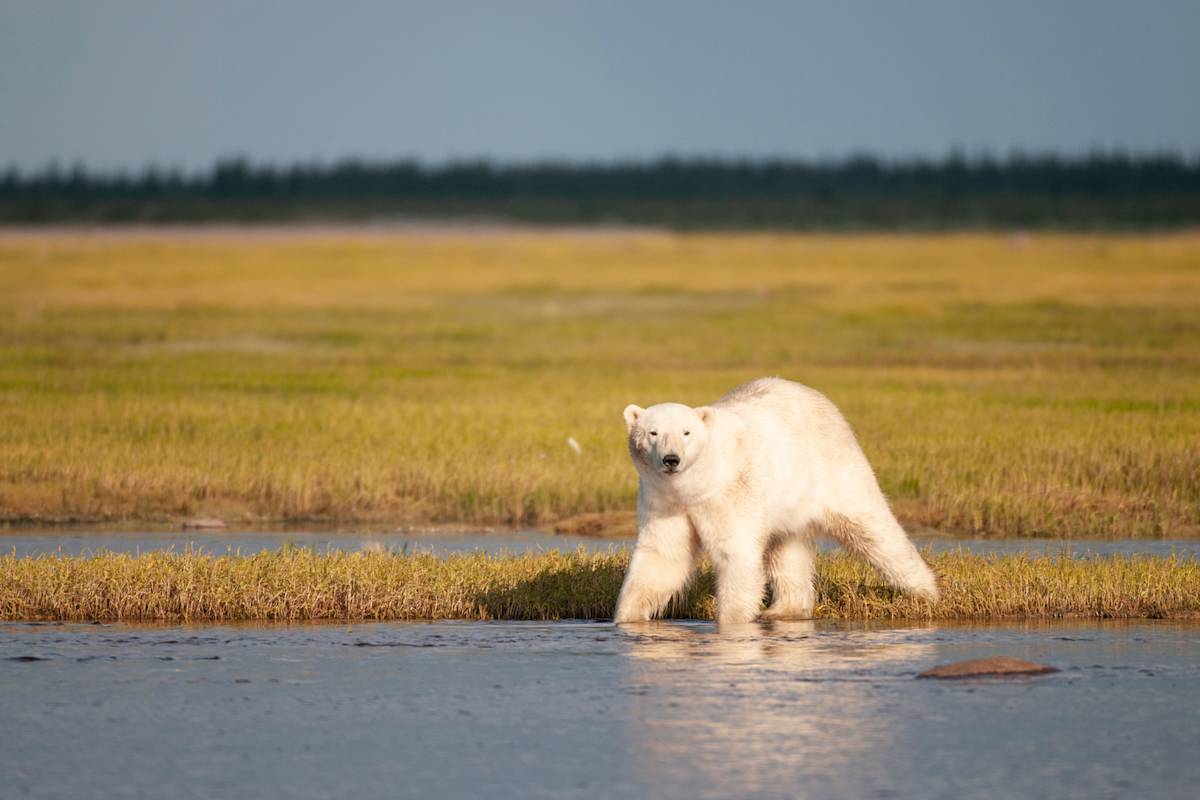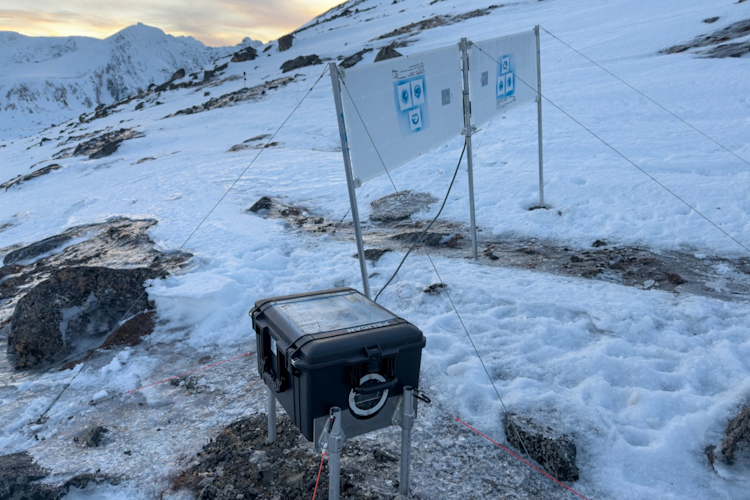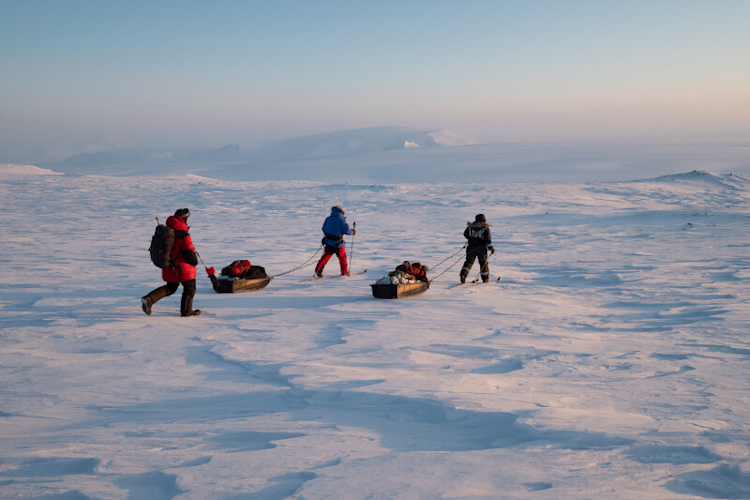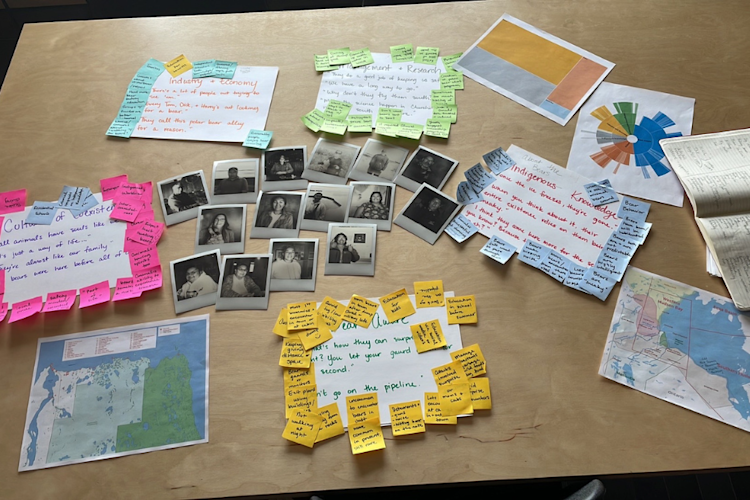The bugs were ferocious. The weather was hot. But summer was the best time to repair the Cape Churchill tower in Wapusk National Park, and so our director of field operations, BJ Kirschhoffer, made his way to the polar bear capital of the world several weeks ago to work with a team to rebuild and stabilize the structure.
We recently caught up with BJ to find out about the experience.
Q: Tell us about the Cape Churchill tower. What is its history? How is it used today?
A: Back in the 1970s, scientist Ian Stirling came up the idea of building an observation tower at Cape Churchill so he could study the behavior of the polar bears that gather there while waiting for fall freeze-up. This was back in the days before Tundra Buggies®, when scientists didn't know much about what polar bears do while on land.
It took a lot of searching, but Ian found an abandoned fire tower. Manitoba Conservation arranged to have it shipped to the Cape, and a crew from Manitoba Hydro rebuilt it. Ian told me he was glad for the help—"We didn't need a bunch of biologists trying to put it together!"
After the tower was built, Ian would camp out in a rustic hut at the top, with polar bears on the ground below. He learned a lot about their behavior that way.
More recently, we've used the tower as an internet relay station and as a mount for the Cape Churchill Polar Bear Cam. The cam is operated under an agreement between Parks Canada and explore.org, with Polar Bears International providing technical support.
Q: Why was it necessary to rebuild the tower?
A: The tower has actually held up amazingly well, but we wanted to make sure it was safe for cameras and for people. An engineering firm flew out to the Cape to have a look and make recommendations.
The firm suggested improvements including re-stabilizing the tower, building a new ladder, and making repairs to the hut, like adding a new roof and new flooring. Other improvements included insulating the hut, putting in new windows, and adding a methane fuel cell to produce energy. Now it's good and safe—and much more comfortable thanks to cutting edge green technology.
Q: What were conditions like when you were working on the tower?
A: We expected that it would be chilly, but Churchill was undergoing a heat wave. Temperatures topped out at about 90 degrees F and it was pretty humid. It was also incredibly buggy, with thick clouds of mosquitos. There were so many, they drove you crazy. The only way to escape them was to climb the tower or walk upwind for a bit.
Then, just before we left, the black flies came. We were really happy that we didn't have to hang around to see how bad they would get! Hordes of mosquitos are bad enough, but black flies are incredibly vicious. They can bite right through your clothes.
Q: Did you see any polar bears?
A: We didn't see any polar bears, but we definitely kept an eye out for them. We even erected an electric fence around the perimeter of our campsite. We did see some tracks on the beach—it was late June and the bay was breaking up. Right after we left, 11 polar bears were spotted nearby, so we apparently left just in the nick of time.
Q: How big was the crew? Who was involved?
A: It was a real team effort. Parks Canada provided three people: Kevin Burke, Brian Wasylkoski, and Marc-Andre Belcourt. We also had help from three staff members from Frontiers North Adventures: Ralph Lloyd, Keith Lloyd, and Thomas Fitzpatrick.
In addition to the crew at the Cape, we also had a team from Frontiers North Adventures working in town, loading supplies to be shipped to us: Bob Debets, Joe Stover, Joe Beardy, and Kenny Shields. That was a really big job, considering that we had 173 bags of concrete, plus wood, rolled roofing, insulation, and other supplies.
To give you an idea of what was involved, it took six trips by a small plane and three by helicopter to get all the supplies to the Cape.
Q: You usually visit Churchill during polar bear season. How different was the tundra in summer?
A: The tundra is really beautiful in summer, with wildflowers everywhere—quite a difference from the snow and ice that we see during polar bear season. We saw wildlife including caribou and moose, plus beluga whales in the Churchill River. It was near the time of the summer solstice, so the days were really long. It never really got dark, there was only dusk. It was a great experience—except for the bugs!
















